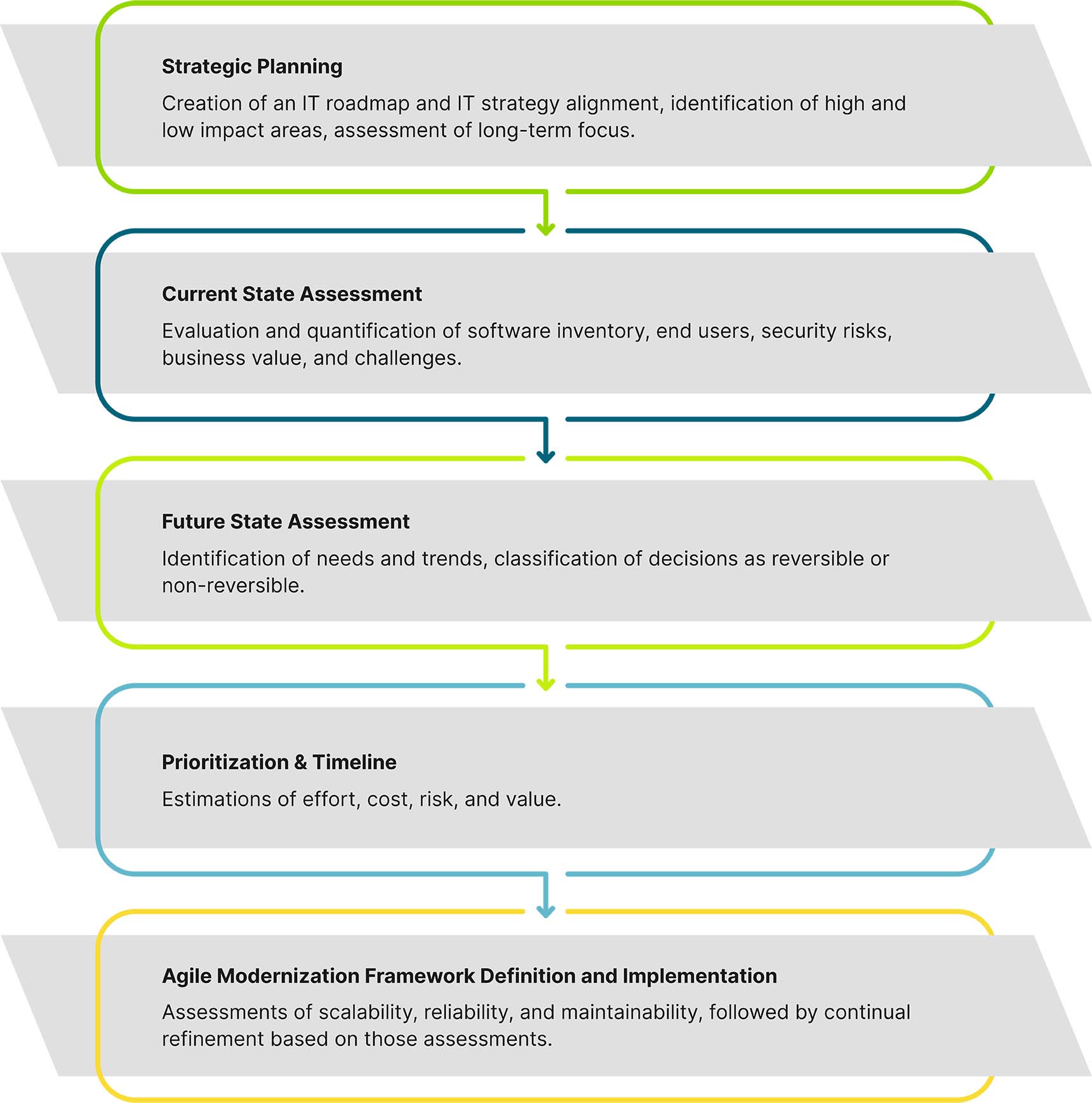 Search
Search


Making the right technology investments is becoming increasingly difficult for federal agencies. Many encounter a host of challenges around IT and OT transformation projects, including limited investment dollars, the added complexities of generational transformation products, and a tendency to return to past solution providers rather than explore best-of-breed options. All these factors can compromise an agency’s future operations through subpar performance and prohibitive long-term technology cost, and could even lead to failed transformation projects.
Many of these challenges can be addressed with more holistic and strategic technology selection criteria. Common mistakes include focusing on near-term software cost rather than the total costs of technology ownership, neglecting to prioritize composable solutions, and lacking a strategy to motivate IT investment. Many organizations also underestimate the risk of doing nothing: Old legacy systems are expensive to maintain and frequently full of known and unknown security vulnerabilities. They can also hold organizations hostage with their inflexibility in meeting modern business demands.
Agencies can greatly improve their long-term project success by doing just three things: 1) calculating the total cost and total value of ownership, 2) identifying core IT transformation success criteria, and 3) systematically evaluating and prioritizing IT and OT investments.
Total Cost of Ownership (TCO)
Total Value of Ownership (TVO)
Total cost of ownership (TCO) and total value of ownership (TVO) are critical metrics for federal agencies to consider when evaluating a technology investment. These calculations are particularly important in government software acquisition processes because software investments are often generational. That makes it essential to deeply understand the total costs and potential savings of any tech investments since they will impact budgets for years.
Calculating the TCO of a software investment means estimating the total expenses that will be incurred during that technology’s lifecycle. That includes the purchase price and other expenditures, like the cost of acquisition, cost of ownership, cost of maintenance, cost of usage, cost of poor quality, and cost of disposal. In almost all cases, the ongoing costs of a software investment will far exceed its purchase price. Fully understanding how expensive a piece of software will be to maintain—and, later, dispose of—helps decision makers better evaluate seemingly comparable software solutions to understand their relative value.
Similarly, calculating the TVO of a software investment means estimating the total business value that a piece of software is expected to deliver over its lifecycle. This includes factors like beneficial returns, reduced time to market, strategic alignment, business-process impact, architecture alignment, direct payback, and improved risk profile. Like TCO, TVO helps give organizations a holistic understanding of the relative value they will realize from different technology options.

Federal agencies can increase the likelihood of successful technology acquisition and implementation by understanding key success criteria for IT investments. Best practices in federal technology acquisitions entail conducting the following processes and analyses to ensure a comprehensive understanding of how the technology compares with other options in relation to key success criteria:

Establishing a systematic software evaluation process for prioritizing IT investments and choosing software is critical for successful IT and OT implementations. An effective software evaluation process includes evaluating the potential technology acquisition from the following perspectives:
There are also hidden costs associated with these project failures, including:
Obvious Costs
Hidden Costs
By calculating TCO and TVO, identifying success criteria, and creating a systematic software evaluation process, federal agencies can implement a holistic and strategic approach to their IT and OT investments. A more comprehensive process will significantly improve your technology acquisition decision-making and reduce the likelihood of failed investments or projects that have a net negative impact on departmental operations and budgets.
Guidehouse has significant experience helping federal agencies evaluate, select, and implement successful technology investments. Our process focuses on people, processes, and technology, with people always coming first in that equation. We are technology-agnostic, believe in human-centered design, and integrate change management at every stage of the process. Guidehouse brings a broader, more comprehensive, and longer-term vision to federal transformation projects—greatly improving your chances of success.
Guidehouse is a global AI-led professional services firm delivering advisory, technology, and managed services to the commercial and government sectors. With an integrated business technology approach, Guidehouse drives efficiency and resilience in the healthcare, financial services, energy, infrastructure, and national security markets.